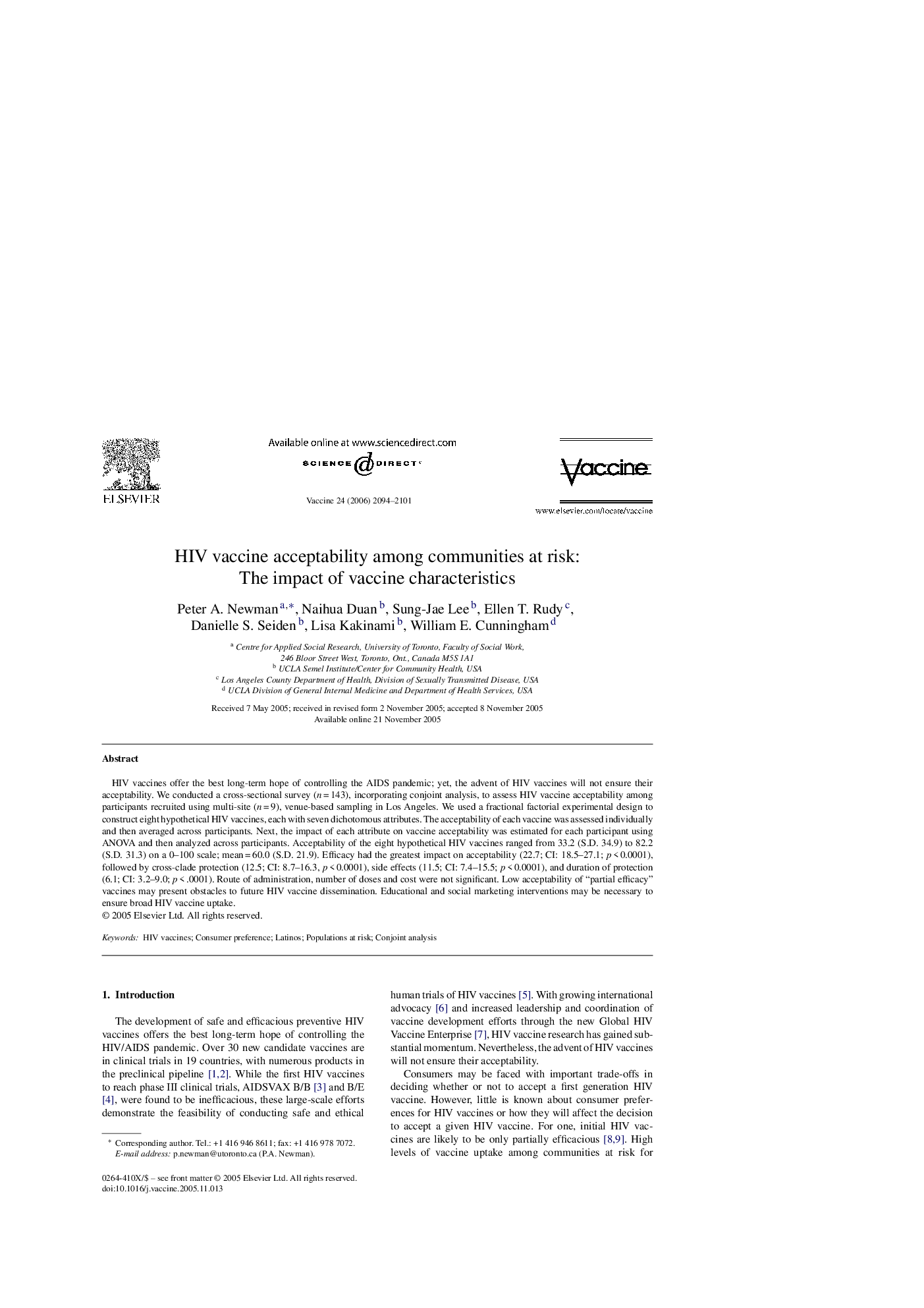| Article ID | Journal | Published Year | Pages | File Type |
|---|---|---|---|---|
| 2409643 | Vaccine | 2006 | 8 Pages |
HIV vaccines offer the best long-term hope of controlling the AIDS pandemic; yet, the advent of HIV vaccines will not ensure their acceptability. We conducted a cross-sectional survey (n = 143), incorporating conjoint analysis, to assess HIV vaccine acceptability among participants recruited using multi-site (n = 9), venue-based sampling in Los Angeles. We used a fractional factorial experimental design to construct eight hypothetical HIV vaccines, each with seven dichotomous attributes. The acceptability of each vaccine was assessed individually and then averaged across participants. Next, the impact of each attribute on vaccine acceptability was estimated for each participant using ANOVA and then analyzed across participants. Acceptability of the eight hypothetical HIV vaccines ranged from 33.2 (S.D. 34.9) to 82.2 (S.D. 31.3) on a 0–100 scale; mean = 60.0 (S.D. 21.9). Efficacy had the greatest impact on acceptability (22.7; CI: 18.5–27.1; p < 0.0001), followed by cross-clade protection (12.5; CI: 8.7–16.3, p < 0.0001), side effects (11.5; CI: 7.4–15.5; p < 0.0001), and duration of protection (6.1; CI: 3.2–9.0; p < .0001). Route of administration, number of doses and cost were not significant. Low acceptability of “partial efficacy” vaccines may present obstacles to future HIV vaccine dissemination. Educational and social marketing interventions may be necessary to ensure broad HIV vaccine uptake.
